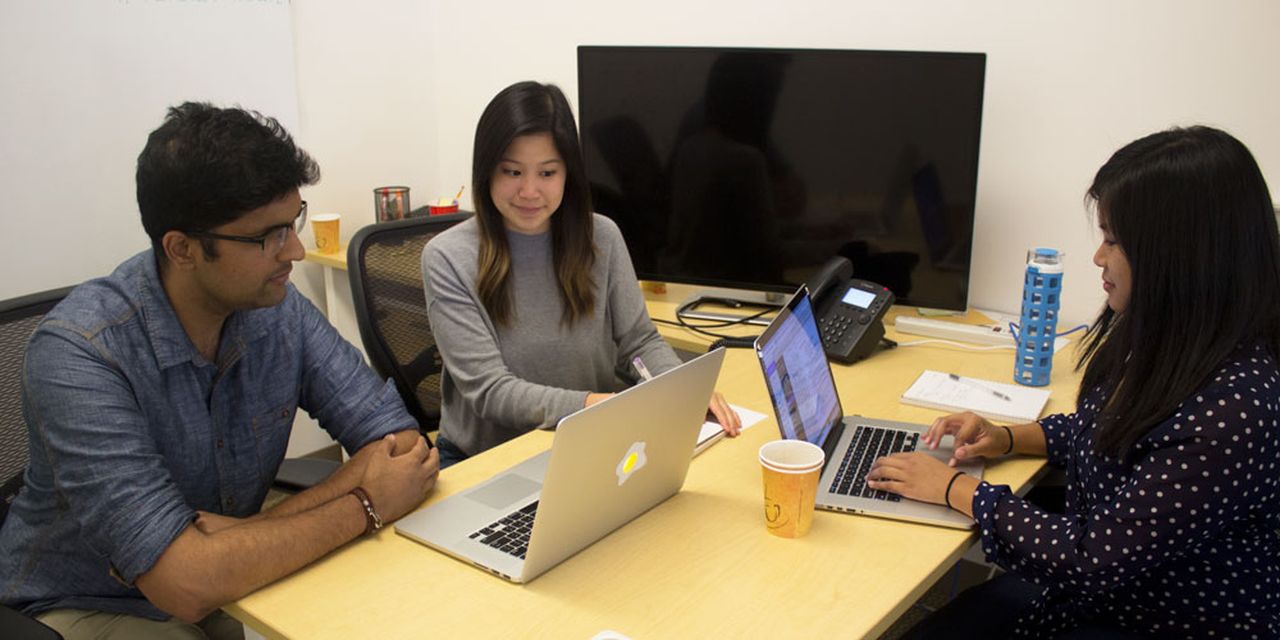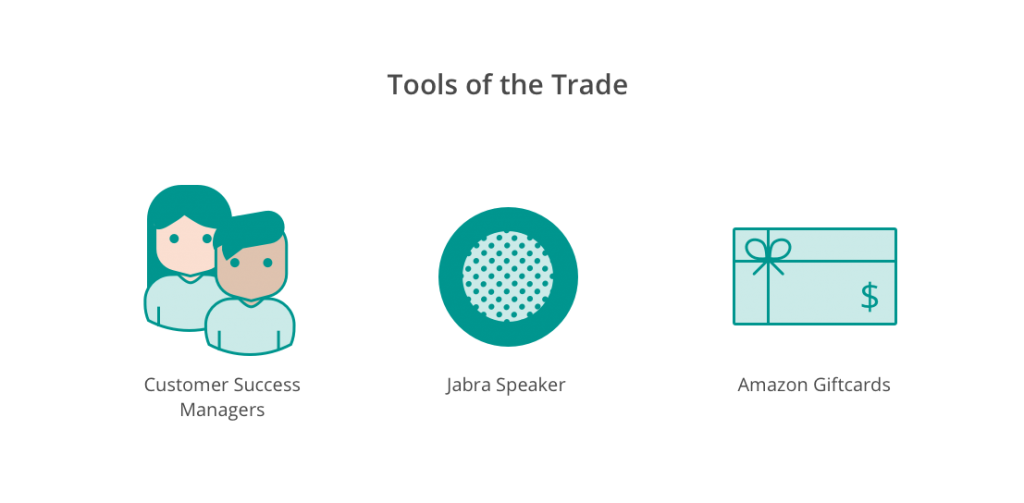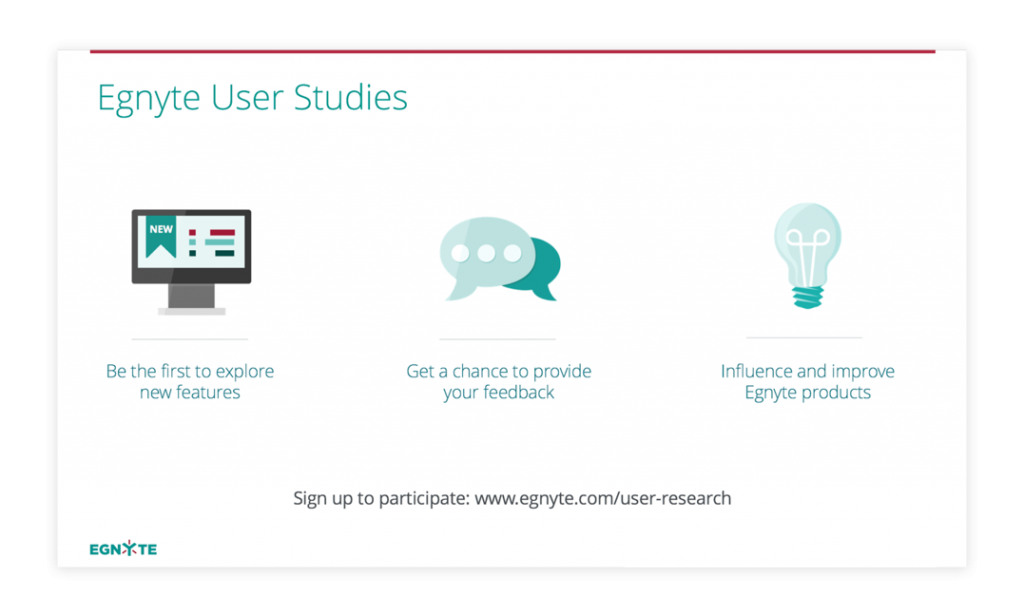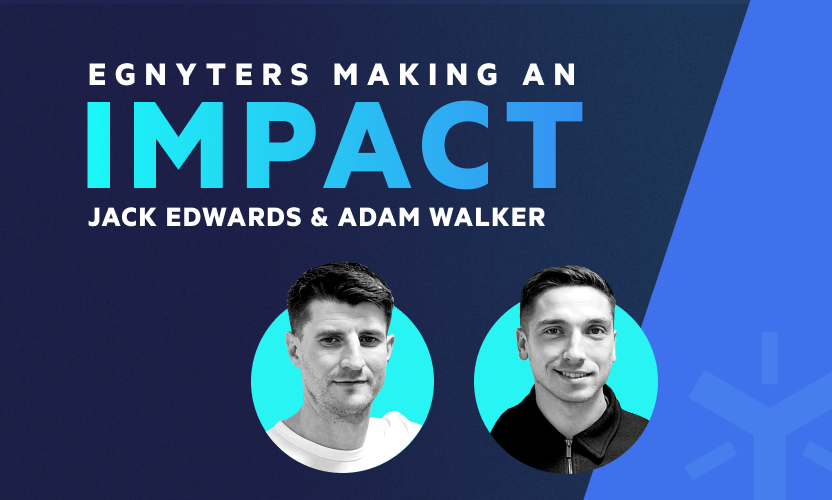
Scalable User Research Recruitment
User research is a vital part of the user experience designer’s repertoire and it has been gaining traction through the years. Designers try their best to incorporate user research in their design process but a dearth of resources, tools, or experience can lead to a mediocre experience. Although user research is derived and inspired by scientific research methods, it doesn’t have to be such a rigid process. User research recruitment is one of the initial steps in the user research process, but a critical step that may hinder people from conducting any research at all. Depending on the size of the design team and resources at hand, designers can decide which recruitment methods work with the problem they are currently trying to solve. In general, what’s the simplest and most cost-effective way to get information about this problem?Where we came fromThe first time I conducted user testing at Egnyte was a few weeks after I started. The design team was working on a huge redesign of our web interface and we were struggling with placement of the navigation bar items. I suggested quick user testing, as I was new to the team and potentially would be less biased than the rest of team who had been working on this redesign for the past few months. At this time we were not performing as much user research on small features or minor changes, so I simply walked around the office and asked people if they could spare some time to provide their opinion. I got rejected a few times but ended up getting helpful feedback. Ultimately this helped us understand our own blind spots and guided us to our design decision. This was a great way to get some more information on a design, especially when we had differing opinions. I was hooked.In the past, formal research was reserved for large scale projects or huge redesigns because of the cost of both time and resources. Now we are able to incorporate some form of it in every project we work on. We initially had a less consistent user research process across the team and as the user experience design field matured, we noticed user research as an emerging trend. At this point, we came to a crossroads. Should we continue on the path we were on and rely on our intuition as designers to create solutions, or should we put in the effort to look into how we could better incorporate user research into our process? We decided on the latter and started experimenting. As we progressed in creating a more consistent process and trying different recruitment strategies, we ran into some problems. Since our team works on a diverse set of projects at once, we had to think about user research in a scalable way to be more efficient.

Where we are nowWe began with internal recruitment of our own employees, then added external recruitment to our toolbox. Realizing that we didn’t have enough time to do as much external recruitment because of having to recruit, schedule, and manage participants, we turned to recruitment services like user interviews. Now that we established our other recruitment methods, we want to focus on customer recruitment.One important factor that helped our research efforts was getting buy-in from the top of the chain. My design team was lucky to receive strong support from our CEO and our manager. They believe in the value of product design and user research. As a result, we are able to leverage design to largely impact the company. In less design-minded companies, designers will need to spend time and effort to convince people in positions of power the potential of design.Internal recruitmentSince everyone in our company uses our product to perform file storing, sharing, and collaboration, we have a close user base to draw from. We generally try to gather participants who are more removed from working on the product, such as employees in Sales or Human Resources. On the flip side, employees can harbor more biases than customers or participants unrelated to Egnyte.We initially sent out a company-wide email gathering info on participants who were interested in helping out. We created a user research specific calendar where we can see the days and times that potential participants are free and their location since some participants work in other offices.External recruitmentExternal recruitment was a natural next step for the team. There were a variety of ways we could potentially reach participants and there was a range in the amount of effort we had to put in. We first reached out to friends on Facebook and through direct messaging. At this stage, we were slowly moving beyond our comfort zones. We took it a step further and performed user testing at the local Starbucks incentivizing with a free drink. This was not an effective way to receive feedback because most people were not very receptive in this setting. We also utilized other social platforms including Craigslist, NextDoor, and Slack channels.The primary downside to external recruitment is the amount of time and effort that goes into this process. Since we don’t have a research coordinator, we do all the tasks of recruitment and setting an external participant up.These tasks include:
- Posting on social sites
- Interfacing with the potential participant
- Scheduling participants
- Creating the screener survey
- Sending NDA’s with Docusign and Egnyte
- Bringing the participant on site or setting up the virtual research session
- Sending out Amazon gift cards for incentives
- Maintaining a list of past participants
Sometimes this can get quite hectic so we created a checklist of actions to run through when we want to perform user research with an external participant. We also leave ample time in between sessions with external participants so we can make sure we have everything in order.

Recruitment services After recruiting external participants on our own for awhile, we realized how much time it took to go through the whole recruitment process. This was time that could be spent refining our research scripts and prototypes. As mentioned earlier, we had strong buy-in from people who make budget decisions for the team so we were able to engage with various recruitment services, but this can be a limiting factor, especially for smaller organizations. Our experiences with User Interviews, UserBob and the recruitment agency we work with in Poland have proven positive and the user base we get from conducting virtual user research is diverse. These services help us out with most of the items on our checklist that we normally handle ourselves. We end up being less biased in recruitment as these services have further reach than we do. We use Zoom for virtual sessions so we can share screens and have participants take control of the prototype. We also use our Jabra speaker to ensure high-quality sound input and output.CustomersInterfacing with customers has always been a challenge for us because of the nature of our product. The ways we currently interact with customers are limited to specific instances and don’t give us much time to thoroughly conduct our research process. We try to run betas with relevant customers for our larger projects so we can receive customer feedback before releasing the product. However, this is usually reserved for our largest releases and not something that we can have for every single product or feature. We also attend customer calls with product managers whenever we get a chance. These calls are more focused on a particular topic the customer has in mind, but we are able to ask a few questions and get some feedback at the end of the session.
Where we want to beGetting to where we are now took time and exploration. We are now prioritizing finding customers to be a part of our user research. Reaching out to customers for an enterprise product is whole another ball game. There are many limitations that arise in this situation. For example, in larger companies, admins can disable our contact with end users so they don’t get spammed. We also have to be cognizant of how receptive customers are to speaking with us. This is where our Customer Success Managers come into play. Their role is interfacing with Egnyte customers to help them understand how to use Egnyte effectively and deal with any issues that may arise. Helping Egnyte customers understand how to use Egnyte effectively and deal with any issues that may arise is their primary role.Moving forward, we are taking the following steps towards customer recruitment:
- Train customer-facing teams in broadly understanding what user research is and how to present it to customers
- Provide a designed slide that highlights the benefits of user research that customer-facing teams can use in their PowerPoint presentations
- Utilize Google Forms to collect information from interested customers and display that link in a variety of places that have high visibility to customers like our help resources, training videos, and website
Run a customer recruitment email campaign to reach out to customers in a highly targeted way

Recruitment is the first step User research recruitment is just the first step in the user research process, but a step that may set people back. Once we recruited participants, we had a gentle push to move forward with the research process. We used that momentum to set up a user research process that works for our team and iterate on our recruitment methods. Hopefully, this article sheds some light onto our recruitment process at Egnyte. If any part of this article resonated with you and you want to help us out, please sign up to participate in Egnyte User Studies.




